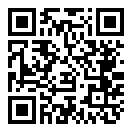Psychiatry’s “Bible” Could List New Set of Disorders
Latest version of DSM may trigger ‘epidemics’ of mental illnesses
Nearly 700,000 prescriptions for atypical antipsychotics were dispensed for kids under 13 last year. The changes being proposed for the manual of mental illness — whose sales since 2000 have topped $40 million — would create even more patients for whom psychoactive drugs can be prescribed.
Photograph by: Joe Raedle, Getty Images
As Dr. Allen Frances read through the list of proposed changes to psychiatry’s bible of mental sickness, alarms started ringing in his own mind.
“I was surprised,” the renowned U.S. psychiatrist says, “that the proposals managed to be much worse than my most pessimistic expectations.”
By the time he was finished reading, Frances had calculated that the recommendations contained within the first draft for the fifth and latest revision of the Diagnostic and Statistical Manual of Mental Disorders — a hugely influential book used daily by doctors worldwide, psychiatry’s official classification of all the ways humanity can go “mad”– could unnecessarily trigger wholesale “epidemics” of mental illness and expose millions more adults and children to potentially harmful psychiatric drugs.
Dr. Frances, more than most, knows the kind of surprises that may be lurking. He chaired the task force that wrote the current edition of the manual — referred to as DSM-IV — which he says is a book that unintentionally contributed to vast and sudden increases in the diagnosis of attention-deficit hyperactivity disorder, autism and childhood bipolar disorder (manic depression), after it made changes in those definitions. Rates of bipolar disorder alone jumped 40-fold in the U.S. after the definition was broadened to suggest that children don’t have to experience the typical manic symptoms seen in adults to be diagnosed bipolar — and that depression in kids can be a persistent irritable mood. “Most of this was not our fault,” Dr. Frances said.
Rather, he blames “a runaway fad led by thought leaders and pushed by drug companies and advocacy groups.”
“We were remarkably conservative and very careful. We laboured very carefully not to have surprises, not to have unintended consequences,” said Dr. Frances, former chair of the psychiatry department at Duke University’s School of Medicine.
But once a diagnosis gets out of the bottle, he says, “it spreads like wildfire in ways you could never imagine.”
This psychiatrists’ bible is in the midst of its first major rewrite in 16 years, coming at a time when anti-depressants, tranquillizersandotherpsychoactive drugs have become the second most-prescribed drug class in the country, second only to cardiovasculars, according to prescription drug tracking firm IMS Health Canada. Across Canada, pharmacies last year dispensed 61.2 million prescriptions for psychotherapeutics, worth nearly $2.4 billion.
Increasingly, some of the most potent, mood-altering drugs are going to children. Between 2005-09, the number of prescriptions forsecond-generation antipsychotics for children under 13 more than doubled, according to IMS data. Last year, nearly 700,000 prescriptions for such antipsychotics were dispensed for kids under 13.
The changes being proposed for the manual of mental illness — whose sales since 2000 have topped $40-million — would create even more patients for whom psychoactive drugs can be prescribed.
Leave a Reply
You must be logged in to post a comment.





 NoScript extension
NoScript extension
